It has been said that if aphids had their own way and unlimited resources the world as we know it would be 149 km deep in the cute little beasts (Harrington, 1994 ). Last year I wrote about how predators that feed on aphids, although useful, don’t really cut the mustard when it comes to keeping them in check and suggested that their host plants played a major role in keeping aphids from taking over the World. While they do play an important part in keeping aphid populations under control, and are aided and abetted by aphid specific predators, there are, however, some much more efficient aphid-specific natural enemies out there. They may be less conspicuous than the brightly coloured ladybirds that we often see munching their way through aphid colonies; public perception of their name may make people wince, but these beautiful and graceful creatures make sure that our appetite for salads and exotic vegetables out of season is satisfied safely and efficiently. Their life cycles rival that of their prey, or should that be hosts, and entomologists fondly imagine that the film Alien was inspired by them 😊
I am, of course, talking about parasitic wasps, or parasitoids as they are more commonly known. They are called parasitoids because unlike true parasites which generally speaking keep their hosts alive, insect victims of these wasps will, if successfully parasitized, die well before their non-parasitized relatives. In case you were wondering, the term parasitoid was coined by the Finnish Hemipterist, Odo Reuter (1913). Aphids are not the only insects that are attacked by parasitoid wasps. The action of insect parasites has been known about for over two hundred years. Erasmus Darwin, grandfather of the more famous Charles, noted that Ichneumonid wasps parasitised cabbage white butterfly caterpillars and so should be encouraged by gardeners (Darwin, 1800). This is not the only early mention of parasitic insects in this context; Wheeler (1928), points out that back in the 1850s, two Italian entomologists, Camillo Rondani and Vittore Ghiliana also suggested the use of parasitic insects as biological control agents. Aphid pests of glasshouse crops originally controlled mainly by predators (van Lenteren & Woets, 1988) are now routinely controlled by the application of commercially produced Braconid and Chalcid wasps (Boivin et al., 2012; van Lenteren, 2012).
Three commonly used aphid parasitoid biological control agents in action. Images from http://biologicalservices.com.au/products/aphelinus-2.html and https://www6.inra.fr/encyclopedie-pucerons/Especes/Parasitoides/Braconidae-Aphidiinae/Praon-volucre
When people think of Hymenoptera, they tend to think of bees, Vespid wasps and ants as being the most important and abundant. They are very much mistaken. The Parastica, or parasitoid wasps, are, by a huge margin, the most speciose and abundant section of
Parasitoids clearly dominate the Hymenopteran fauna of the British Isles (Many thanks to Natalie Dale-Skey of the NHM for permission to use this).
the Hymenoptera both in the UK and elsewhere
In the tropics the parasitoids are even more dominant. Data from Gaston et al., (1996).
Once parasitized, the egg(s), unless they are encapsulated by the aphid ‘immune’ system, hatch and begin to feed on the internal tissues of their, presumably, unsuspecting aphid host. The parasitoid larvae avoid feeding on vital parts of the aphid, so that it can continue to grow and develop and provide food for the parasitoid, until the parasitoid is ready to pupate. Once the parasitoid is ready to pupate it delivers the coup de grace putting the aphid out of its misery and allowing the formation of the ‘mummy’ in
The three most common types of aphid mummies. Images from http://resources.rothamsted.ac.uk/science-stories/aphids-mummies-and-cadavers, http://biologicalservices.com.au/products/aphelinus-2.html and https://farm1.static.flickr.com/327/18532751584_becc0e56e9_b.jpg respectively.
which the parasitoid completes its development before sawing its way out to emerge as a winged adult ready to seek out new hosts, leaving a characteristic neat circular hole in mummy case. In case you were wondering why the mummy of Praon volucre looks like it is sitting on a plate, this because, unlike the other aphid parasitoids, the final instar cuts its way out of the bottom of the aphid and spins its cocoon externally underneath the remnants of the aphid, hence the ‘plate’ (Beirne, 1942).
And out she comes; emerging parasitoid – http://resources.rothamsted.ac.uk/science-stories/aphids-mummies-and-cadavers
Lysiphelbus testaceipes Photo by J.K.Clark, University of California Statewide IPM Project
Once an aphid, now a hollow mummy; note the neat emergence holes. Aphid parasitoids are very much tidier than the parasitic lifeform in the classic film Alien 🙂
Another aspect of their life style that makes parasitoids a breed apart from true parasites, is that as well as using aphids as egg laying sites for their larvae, the adults like to snack on them every now and then to help mature more eggs and to keep up their energy levels; sometimes quaintly described as predatism (Flanders, 1953). Although the parasitoids can make feeding attacks at any time, they appear to feed first and then start laying their eggs (e.g. Collins et al., 1981).
Parasitoids are widely used as biological control agents in glasshouses and other protected environments as they are generally regarded as being more effective than predators (Debach & Rosen, 1991), although there is some support that generalist predators can play a significant part in biological control in the wider environment (Symondson et al., 2002; Gontijo et al., 2015). That said, aphid parasitoids seem to be fairly host specific in that commercial companies offer specific parasitoid mixtures to control different aphid pest species e.g. https://www.koppert.com/pests/aphids/product-against/aphipar/ [Note this is NOT an endorsement]. In fact it has been suggested that the relationship between aphids and their parasitoids can be used to clarify aphid taxonomic relationships (Mackauer, 1965). On the other hand, there are very few examples of monophagous aphid parasitoids, most being described as oligophagous (Stary & Rejmanek, 1981). So given that there is a fair bit of evidence that the parasitoids attacking aphids do show some discrimination in their choice of hosts, how do they find them?
Parasitoids in general were originally thought to be “possessed of an unerring instinct that guided them in their search for hosts” but Cushman (1926) rebutted this idea pointing out that actually the parasitoids first home in on the habitat or food plant that their host lives in and then search for their host (Laing, 1937). The parasitoids referred to by Cushman and Laing, are however, not parasitoids of aphids, attacking lepidopteran leaf miners and carrion feeding flies respectively, so you might perhaps think that aphid parasitoids could have a different strategy. Although habitat selection by parasitoids of lepidopteran larvae (Thorpe & Caudle, 1938) and sawfly larvae (Monteith, 1955), using olfactory cues of their host’s food plant was confirmed readily easily and early on, the situation with aphids was less clear cut. Manfred Mackauer for example, suggested that aphid parasitoids might be using visual cues, such as leaf deformities or damage to find their aphids hosts (Mackauer, 1965). The breakthrough came when three cabbage loving entomologists from the USA used an olfactometer to first show that the Braconid parasitoid Diaeretiella rapae, responded positively to the odour of collards (what we in the UK call spring greens) and second to show a very strong preference for them to lay their eggs in the aphid Myzus persicae when it was feeding on crucifers rather than other host plants. They attributed this to the presence of mustard oil, the chemical that gives cabbages their distinctive taste and suggested that once the aphid host plant was found then the parasitoids used visual cues to find their aphid victims (Read et al., 1970). Six years later it was firmly established that parasitoids in general used olfactory cues both to locate the habitat of their host (long-range) and then a short-range to find and confirm the identity (contact chemicals) their insect hosts (Vinson, 1976).
It was thought that the aphid parasitoids were chemically ‘conditioned’ during their larval life within the aphid feeding on a host plant and that this influenced their adult host preferences (e.g. Sheehan & Shelton, 1989; Wickremasinghe & Van Emden, 1992). These, and other similar results, seemed to support the Hopkins host selection principle (Hopkins, 1917) which states that adult preferences are learnt as larvae. A very neat experiment by van Emden et al., (1996) proved this hypothesis wrong. They transferred aphid mummies from the plant on which they had been parasitized on to another host plant and this changed the preference of the emerging adult, seeming to suggest that this was how aphid parasitoids developed their host preferences. Now comes the neat, and very tricky part; if however, the parasitoid pupae were removed (very carefully) from the mummy case and reared to adulthood in the absence of a host plant or mummy and kept in a glass tube, the emerging adults showed no preference for particular host plants, clearly showing that adult preferences were not determined during larval development but ‘conditioned’ by exposure to the external skin of the aphid mummy on emergence (van Emden et al., 1996). Using aphids reared on an artificial diet (Douloumpaka & van Emden, 2003) showed that the it was very likely that the mother parasitoid leaves a chemical cue in or around the egg(s) she lays and that this is later incorporated into the silk of the parasitoid pupa, thus inducing the host preference seen as an adult.
An additional twist to the story is that male and female parasitoids differ in their responses to odours. Both sexes of Aphidius uzbekistanicus and A. ervi, parasitoids of cereal aphids in the UK, respond to plant odours, but only females respond to aphids (Powell & Zhi-Li, 1983). Males of both species are, however, attracted to the odours of their respective females, suggesting the existence of a sex pheromone. The existence of a sex pheromone in aphid parasitoids had been suggested a few years earlier when it was shown that male D. rapae attempted to copulate with filter paper that had had female abdomens crushed on them (Askari & Alisha, 1979). The existence of sex pheromones in aphid parasitoids has now been shown in several species (e.g. Decker et al., 1993; McNeil & Broduer, 1995). Strangely, female parasitoids also respond to sex pheromones, but in their case, the sex pheromones of aphids. It turns out that they ‘parasitise’ aphids in more than one way, they home in on their prey using the aphid sex pheromone and this enables them to find a suitable overwintering host (Hardie et al., 1991). At other times of the year they also use other aphid indicators; several studies have shown that parasitoids use the presence of aphid honeydew to help them find their hosts (Budenberg, 1990; Bouchard & Cloutier, 1984; Gardner & Dixon, 1985).
Predators of aphids such as ladybirds use chemical markers to warn other ladybirds that they have laid eggs near aphid colonies, thus reducing the chances of cannibalism and competition (e.g. Oliver et al., 2006). Given that the eggs of aphid parasitoids are laid internally, they are in effect invisible, it would make sense if the parasitoids ‘marked’ their hosts in some way to avoid other parasitoids laying their eggs in an already parasitized aphid, superparasitism. Sure enough, there is some evidence that some adult parasitoids can recognise aphids that already have larval parasitoids developing inside them although they don’t seem to be able to consistently recognise already parasitized aphids until some hours afterward (e.g. Cloutier et al., 1984). In some cases, it seems that it is the aphid herself that prevents superparasitism by reacting more aggressively towards parasitoids after being attacked once (Gardner & Dixon, 1984) and also by the presence of dried siphuncular secretions on the aphid’s skin (Outreman et al., 2001). The waxy secretion had an effect for up to a day or so after which the internal changes caused by the developing parasitoid larvae were enough to deter further oviposition attempts.
It is a good thing for the poor aphids that they have such a high reproductive rate, or they would truly be in dire straits. On the other hand, as exemplified by the words of Jonathan Swift (1733),
“So naturalists observe, a flea
Has smaller fleas that on him prey;
And these have smaller still to bite ’em,
And so proceed ad infinitum”
there are parasites of parasitoids, the hyperparasites, that help keep the numbers of parasitoids under control, and thus, indirectly, help aphids remain relatively abundant.
References
Askari, A. & Alisha, A. (1979) Courtship behavior and evidence for a sex pheromone in Diaeretiella rapae (Hymenoptera: Braconidae), the cabbage aphid primary parasitoid. Annals of the Entomological Society of America, 72, 79-750.
Beirne, B.P. (1942) Observations on the life-history of Praon volucre Haliday (Hym.: Braconidae), a parasite of the mealy plum aphis (Hyalopterus arundinis Fab.). Proceedings of the Royal Entomological Society of London, Series A, General Entomology, 17, 42-47.
Boivin, G., Hance, T. & Brodeur, J. (2012) Aphid parasitoids in biological control. Canadian Journal of Plant Science, 92, 1-12.
Bouchard, Y. & Cloutier, C. (1984) Honeydew as a source of host-searching kairomones for the aphid parasitoid, Aphidius nigripes (Hymenoptera: Aphidiidae). Canadian Journal of Zoology, 62, 1513-1520.
Budenberg, W.J. (1990) Honeydew as a contact kairomone for aphid parasitoids. Entomologia experimentalis et applicata, 55, 139-148.
Cloutier, C., Dohse, L.A. & Bauduin, F. (1984) Host discrimination in the aphid parasitoid Aphidius nigripes. Canadian Journal of Zoology, 62, 1367-1372.
Collins, M.D., Ward, S.A., & Dixon, A.F.G. (1981) Handling time and the functional response of Aphelinus thomsoni, a predator and parasite of the. Journal of Animal Ecology, 50, 479-487.
Cushman, R.A. (1926) Location of individual hosts versus systematic relation of hots species as a determining factor in parasitic attack. Proceedings of the Entomological Society of Washington, 28, 5-6.
Darwin, E. (1800) Phytologia: or The Philosophy of Agriculture and Gardening. P. Byrne, Grafton Street, London.
Debach, P. & Rosen, D. (1991) Biological Control by Natural Enemies, Cambridge University Press, New York.
Decker, U.M., Powell, W. & Clark, S.J. (1993) Sex pheromone in the cereal aphid parasitoids Praon volucre and Aphidius rhopalosiphi. Entomologia experimentalis et applicata, 69, 33-39.
Douloumpaka, S. & van Emden, H.F. (2003) A maternal influence on the conditioning to plant cues of Aphidius colemani Viereck, parasitizing the aphid Mysuze persicae Sulzer. Physiological Entomology, 28, 108-113.
Flanders, S.E. (1953) Predation by the adult Hymenopteran parasite and its role in biological control. Journal of Economic Entomology, 46, 541-544.
Gardner, S.M. & Dixon, A.F.G. (1984) Limitation of superparasitism by Aphidius rhopalosiphi: a consequence of aphid defensive behaviour. Ecological Entomology, 9, 149-155.
Gardner, S.M & Dixon, A.F.G. (1985) Plant structure and foraging success of Aphidius rhopalosiphi (Hymenoptera: Aphidiidae). Ecological Entomology, 10, 171-179.
Gaston, K.J., Gauld, I.D. & Hanson, P. (1996) The size and composition of the hymenopteran fauna of Costa Rica. Journal of Biogeography, 23, 105-113.
Griffiths, D.C. (1960) The behaviour and specificity of Monoctonus paldum Marshall (Hym., Braconidae), a parasite of Nasonovia ribis-nigbi (Mosley) on lettuce. Bulletin of Entomological Research, 51, 303-319.
Hardie, J., Nottingham, S.F., Powell, W. & Wadhams, L.J. (1991) Synthetic aphid sex pheromone lures female parasitoids. Entomologia experimentalis et applciata, 61, 97-99.
Harrington, R. (1994) Aphid layer. Antenna, 18, 50-51.
Hopkins, A.D. (1917) Contribution to discussion. Journal of Economic Entomology, 10, 92-93.
Holler, C. (1991) Evidence for the existence of a species closely related to the cereal aphid parasitoid Aphidius rhopalosiphi De Stefani-Perez based on host ranges, morphological characters, isoelectric focusing banding patterns, cross-breeding experiments and sex pheromone specificities (Hymenoptera, Braconidae, Aphidiinae. Systematic Entomology, 16, 15-28.
http://www.biologicalcontrol.info/aphid-primary-and-hyperparasitoids.html
Laing, J. (1937) Host-finding byinsect parasites 1. Observations on the finding of hosts by Alysia manducator, Mormoniella vitripennis and Trichogramma evanescens. Journal of Animal Ecology, 6, 298-317.
Mackauer, M. (1965) Parasitological data as an aid in aphid classification. Canadian Entomologist, 97, 1016-1024.
McNeil, J.N. & Brodeur, J. (1995) Pheromone-mediated mating in the aphid parasitoid, Aphidius nigripes. Journal of Chemical Ecology, 21, 959-972.
Monteith, L.G. (1955) Host preferences of Drino bohemica Mesn. (Diptera; Tachnidae) with particular reference to olfactory responses. Canadian Entomologist, 87, 509-530.
Oliver, T.H., Timms, J.E.L., Taylor, A. & Leather, S.R. (2006) Oviposition responses to patch quality in the larch ladybird Aphidecta obliterata (Coleoptera: Coccinellidae): effects of aphid density, and con- and heterospecific tracks. Bulletin of Entomological Research, 96, 25-34.
Outreman, Y., Le Ralec, A., Plantegenest, M., Chaubet, B, & Pierre, J.S. (2001) Superparasitism limitation in an aphid parasitoid: cornicle secretion avoidance and host discrimination ability. Journal of Insect Physiology, 47, 339-348.
Powell, W. & Zhi-Li, Z. (1983) The reactions of two cereal aphid parasitoids, Aphidius uzbekistanicus and A. ervi to host aphids and their food-plants. Physiological Entomology, 8, 439-443.
Reuter, O.M. (1913). Lebensgewohnheiten und Instinkte der Insekten (Berlin: Friendlander).
Stary, P. & Rejmanek, M. (1981) Number of parasitoids per host in different systematic groups of aphids: The implications for introduction strategy in biological control (Homoptera: Aphidoidea; Hymenoptera: Aphidiidae). Entomologica Scandinavica, Suppl. 15, 341-351.
Riley, W.A. (1931) Erasmus Darwin and the biologic* control of insects. Science, 73, 475-476.
Sheehan, W. & Shelton, A.M. (1989) The role of experience in plant foraging by the aphid parasitoid Diaeretiella rapae (Hymenoptera: Aphidiidae). Journal of Insect Behavior, 2, 743-759.
Symondson, W.O.C., Sunderland, K.D., & Greenstone, M.H. (2002) Can generalist predators be effective bicontrol agents? Annual Review of Entomology, 47, 561-594.
Thompson, W.R. (1930) The principles of biological control. Annals of Applied Biology, 17, 306-338.
Thorpe, W.H. & Caudle, H.B. (1938) A study of the olfactory responses of insect parasites to the food plant of their host. Parasitology, 30, 523-528.
Van Emden, H.F., Spongal, B., Wagner, E., Baker, T., Ganguly, S. & Douloumpaka, S. (1996) Hopkins’ ‘host selection principle’, another nail in its coffin. Physiological Entomology, 21, 325-328.
Van Lenteren, J.C. (2012) The state of commercial augmentative biological control: plenty of natural enemies, but a frustrating lack of uptake. BioControl, 57, 1-20.
Van Lenteren, J.C. & Woets, J. (1988) Biological and integrated control in greenhouses. Annual Review of Entomology, 33, 239-269.
Vinson, S.B. (1976) Host selection by insect parasitoids. Annual Review of Entomology, 21, 109-133.
Wheeler, W.M. (1922). Social life among the insects: Lecture II. Wasps solitary and social. Scientific Monthly, 15, 68-88.
Wheeler, W.M. (1928) Foibles of Insects and Men. Alfred Knopf, New York
Wickremasinghe, M.G.V. & Van Emden, H.F. (1992) Reactions of adult female parasitoids, particularly Aphidius rhopalosiphi, to volatile chemical cues from the host plants of their aphid prey. Physiological Entomology, 17, 207-304.
*This is how he spelt it; not a mistake on my part J


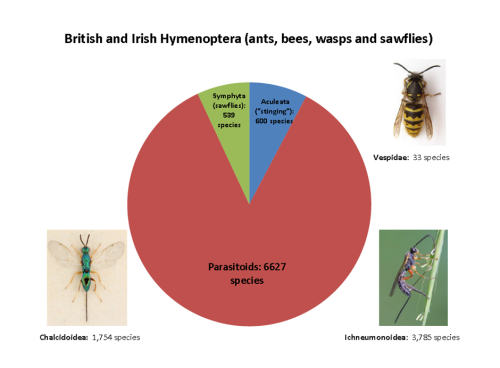
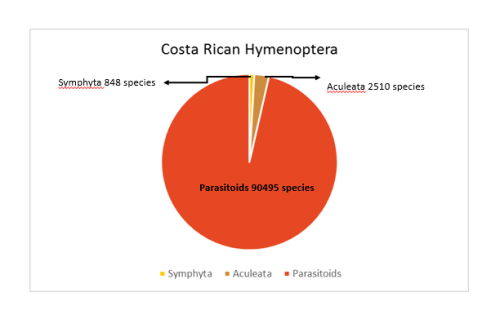
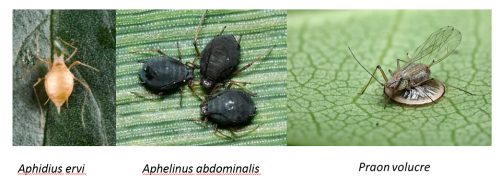
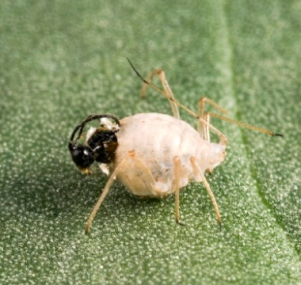
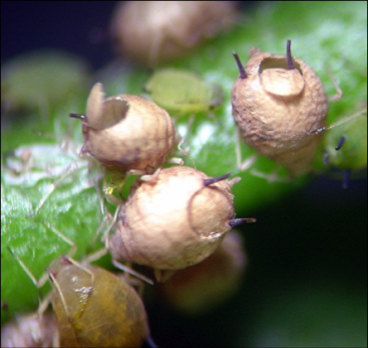
Many thanks for your article. what an amazing ,complex world! I cant even change a lightbulb.
LikeLiked by 1 person
Hi Steve,
Thank you for this article. I am very interested in aphids for a unique reason.
My friend Valerie who lives in Napa, CA, has an apartment infestation that is out of control.
I found one of your articles about aphids that bite, which was so helpful, because these aphids are biting her.
Do you have any other links to info about biting aphids? The Napa County Agricultural entomologist who identified the aphid sample, said that there are no biting aphids. Thereby suggesting Valerie is imagining things.
I realize you are retired, but we desperately need help. No one can help Valerie, aside from gross exterminators. She is very much a natural & organic person, & doesn’t want to poison her home environment. We can’t afford to fly you over here, but we have a beautiful Victorian home we could provide for you. Perhaps a wine country trip is in the near future?
Thank you for your most excellent career. I have enjoyed discovering you and reading your posts. I am a poet & community activist.
Lin Marie deVincent, lmdevincent@comcast.net, in Sonoma, CA.
PS Sonoma put in a “Roundabout” between us and Glen Ellen. It caused all kinds of consternation, challenging us straight-line Americans to learn to merge & flow. If you come for a visit I will personally drive you around it!
Sonoma County Opens First Traffic Roundabout | Sonoma Valley, CA …
https://patch.com/california/sonomavalley/sonoma-county-opens-first-traffic-roundabout
Oct 30, 2013 – (Editor’s Note: This information comes from a press release received by Patch.) SANTA ROSA, Calif. – The intersection of Arnold Drive and Agua Caliente Road, outside of Sonoma, has been improved with a new roundabout. The roundabout has four approaches, Arnold Drive to the north and south, Agua …
LikeLike
Pingback: Spore shedding aphids | Don't Forget the Roundabouts